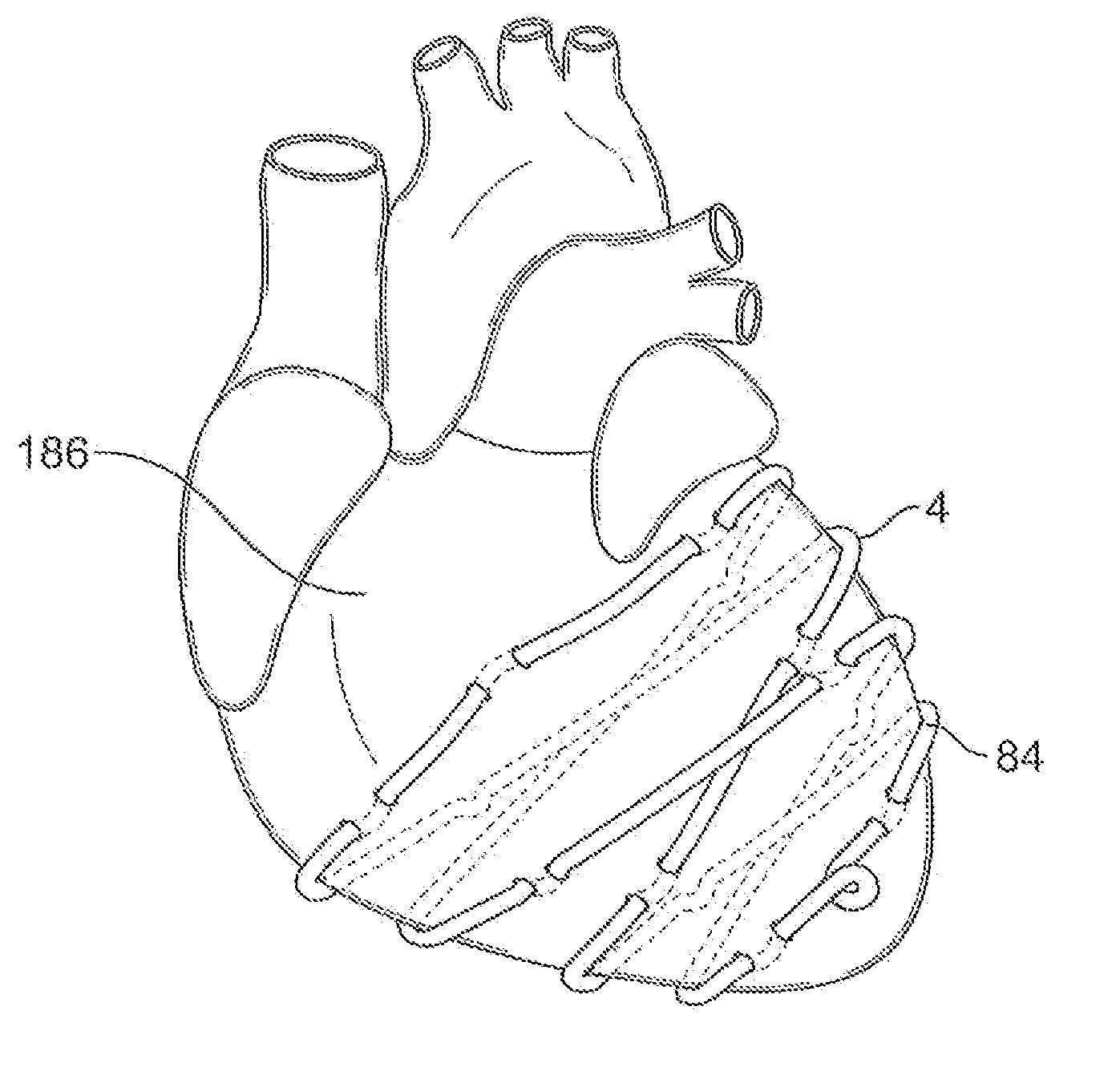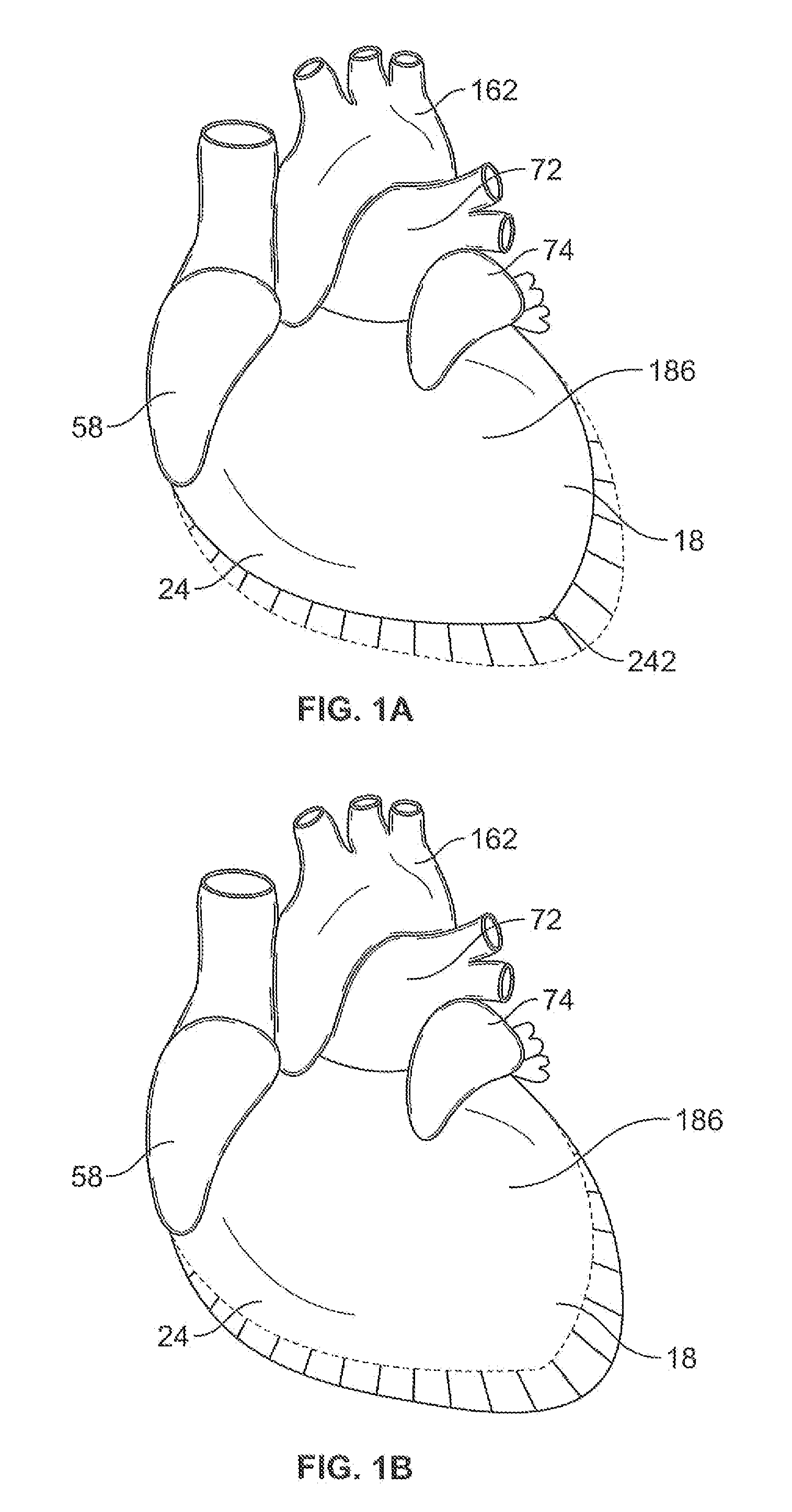Systems for heart treatment
a heart and system technology, applied in the field of minimally invasive, mechanical, medical devices, can solve the problems of ventricular dysfunction, inability to perform the simplest everyday tasks of patients, inability to properly and adequately fill or empty blood from the left ventricle with adequate efficiency to meet the metabolic needs of the body, etc., to facilitate positive or reverse remodeling, improve cardiac output and efficiency, and limit further degeneration of chf
- Summary
- Abstract
- Description
- Claims
- Application Information
AI Technical Summary
Benefits of technology
Problems solved by technology
Method used
Image
Examples
embodiment 84
[0053]FIGS. 3A to 3H show a cardiac support structure embodiment 84 that incorporates anchors 32 separately deployable from the tensile members. It should be noted, however, that the anchors can be advantageously be integrated and / or interconnected with the tensile members. FIG. 3C shows an anchor 32 that can be inserted through myocardium and incorporates notches 122 that fit in mating openings 142 of the tensile members to secure it firmly in position for chronic use throughout the necessary cyclic life of the device. The tensile members shown in FIGS. 3A and 3B incorporate a spring component capable (if desired) of a pre-defined extension and contraction such that the tensile member 84 can be expanded during positioning and apply a compressive force against the heart to continuously urge and maintain the heart into the preferred helical orientation or any other orientation as defined by the operator during the implant procedure.
[0054] Tensile members 84 may comprise a tubing of r...
embodiment 4
[0057]FIG. 5B shows cardiac support structures 4 as shown in FIG. 5A deployed through the myocardium of heart 186. In the cardiac support structure embodiment 4 in FIG. 5A, a single tensile member 84 is shown with spaced apart tissue penetration ends 120 on one side and a connecting spring on the opposite side 126. Upon insertion of the tissue penetrating ends 120 of the tensile members 84, a cardiac support structure anchor 124 can be placed over these ends to secure the member to the tissue surface or the ends of the tensile member can be tied to produce an axially-oriented tightening of the support structure 4. Still further, one free end of the tensile member can be subsequently inserted through myocardium at a spaced apart location to produce a three-dimensional, cinching effect.
[0058] According to one aspect of the invention, multiple cardiac support structures are secured to the heart tissue to produce a helical pattern as shown in FIG. 5B, thereby maintaining or repositionin...
PUM
 Login to View More
Login to View More Abstract
Description
Claims
Application Information
 Login to View More
Login to View More - R&D
- Intellectual Property
- Life Sciences
- Materials
- Tech Scout
- Unparalleled Data Quality
- Higher Quality Content
- 60% Fewer Hallucinations
Browse by: Latest US Patents, China's latest patents, Technical Efficacy Thesaurus, Application Domain, Technology Topic, Popular Technical Reports.
© 2025 PatSnap. All rights reserved.Legal|Privacy policy|Modern Slavery Act Transparency Statement|Sitemap|About US| Contact US: help@patsnap.com



